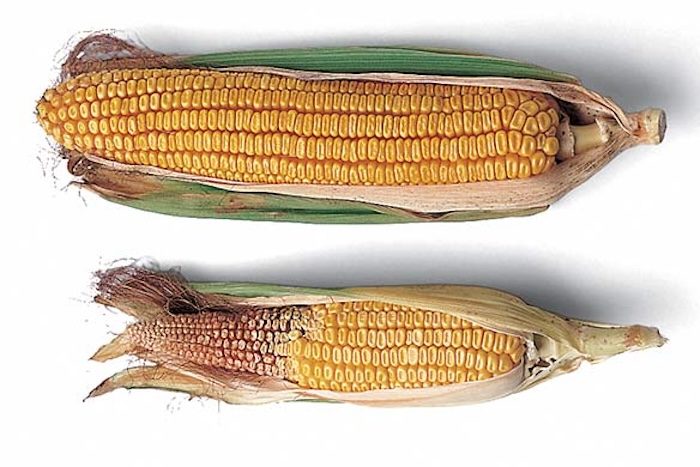No-Till Farmer
Get full access NOW to the most comprehensive, powerful and easy-to-use online resource for no-tillage practices. Just one good idea will pay for your subscription hundreds of times over.

Incomplete ear fill in boron-deficient corn is evident above and caused severely reduced yield. During the growing season, boron deficiency in corn is sometimes evidenced by yellow spots or striations on actively growing leaves.
Photo by: U.S. Borax
If you talk about plant nutrition with no-tillers who are setting yield records, it’s likely that they’ll quickly mention getting the basics right and then paying close attention to the little things
While the bulk of plant nutrition centers on the big three macronutrients — nitrogen (N), phosphorus (P) and potassium (K) — the lesser-considered micronutrients, aka the important little things, are critical to optimum plant growth. If they are in short supply, harvest payday can be short, too.
Micronutrients play a big part in the so-called Law of the Minimum, which states if one of the essential plant nutrients is deficient, plant growth will be poor even when all other essential nutrients are abundant. The idea was developed in the 1840s by German agricultural scientist Carl Sprengel and later popularized by Justus von Liebig, whose name is now associated with the concept.
Over 2024 growing season, we will discuss 7 of these critical nutrients, why they are important and how no-tillers can ensure that they are part of a bigger yield payday at harvest. The series will include boron in this article, followed by copper, chlorine, iron, manganese, molybdenum and zinc.
“The Law of the Minimum takes on added importance when fertilizer prices for N and P products are high, says Ron Olson, agronomist for The Sulphur Institute. “This may tempt some growers to reduce or even eliminate applications of micronutrients but von Liebig’s law tells us that if a soil is deficient in, say…